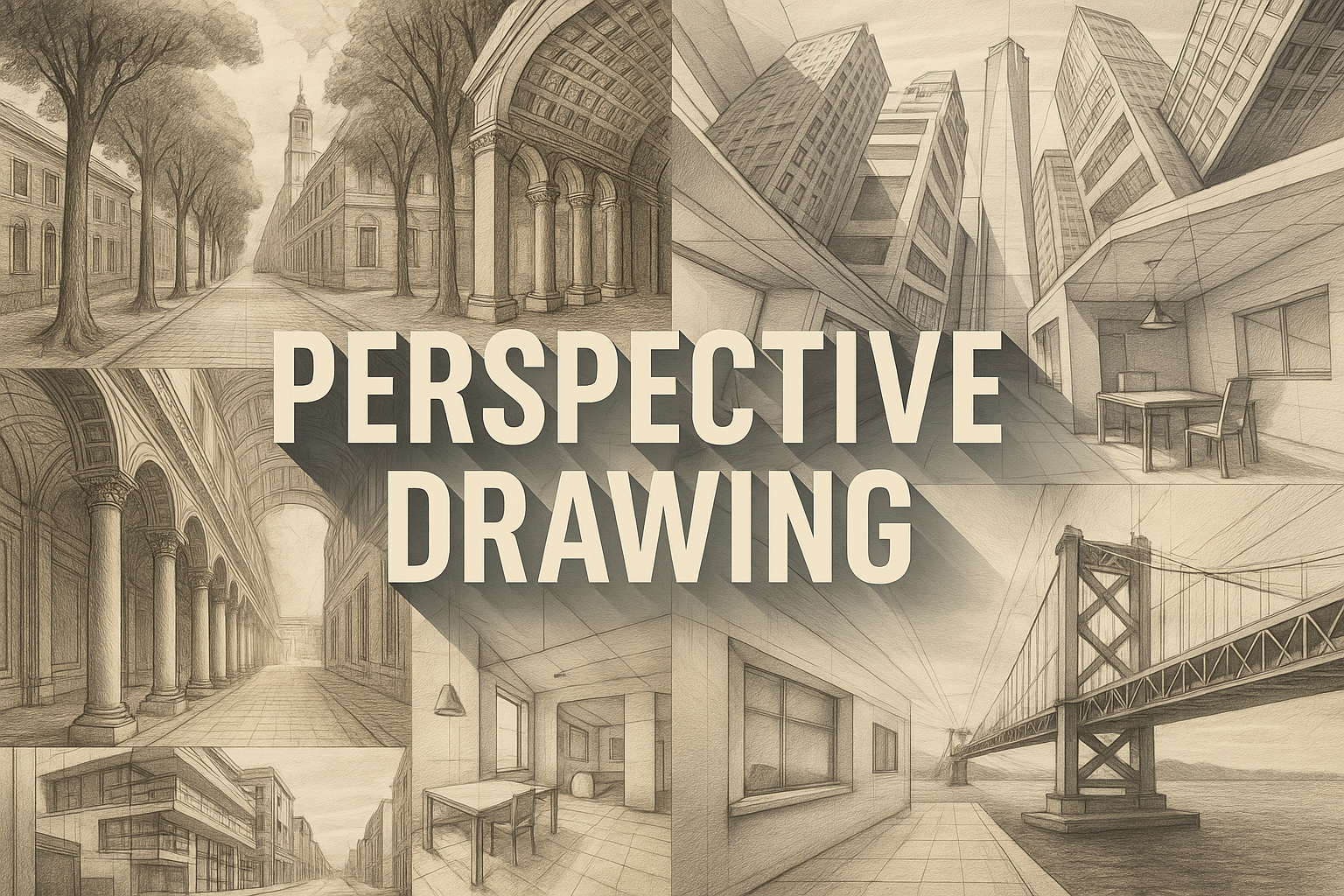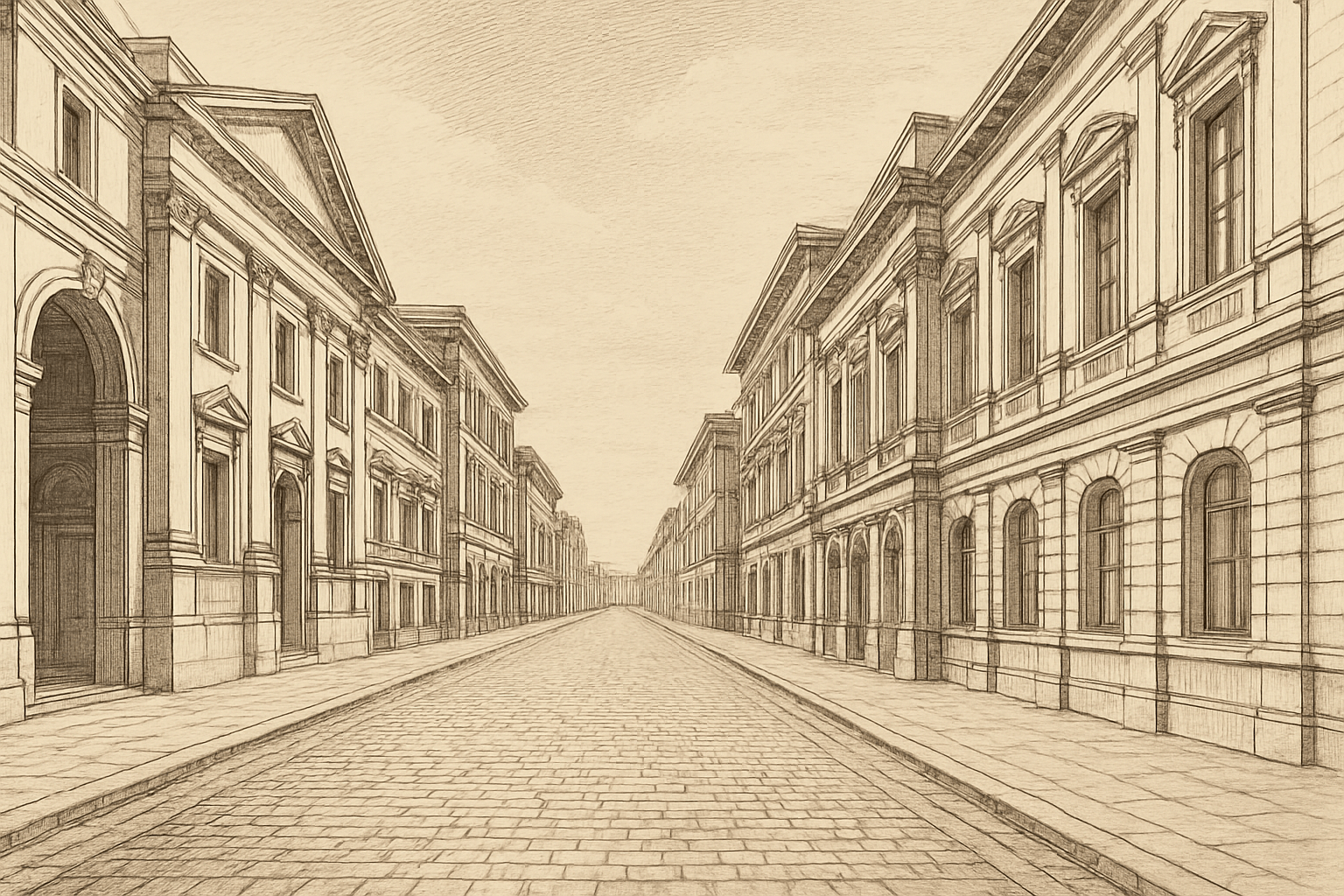
Perspective Drawing
The art style Perspective Drawing is characterized by its use of perspective to create the illusion of depth. This is done by drawing objects in a way that makes them appear smaller the further away they are from the viewer. This can be done by using a vanishing point, or by drawing objects at different sizes.
AOI thinking about Perspective Drawing [+_~]-/
Overview and Quickfacts
Perspective drawing is a type of drawing that is used to create the illusion of depth on a two-dimensional surface. This is done by using a variety of techniques, such as converging lines, foreshortening, and atmospheric perspective.
Can understand it also, as:
One-point perspective, two-point perspective, three-point perspective, isometric projection, oblique projection
Categorize it as:
Impressionism, Modernism
.: Dreaming :.
holds a HAIKU for the art style
:. Thought is power .:
Detailed Description
In the Renaissance, artists began to use a technique called perspective drawing to create the illusion of depth on a flat surface. Perspective drawing uses the principles of geometry to create the illusion of depth. The most important principle of perspective drawing is the law of perspective, which says that objects appear smaller the farther away they are from the viewer. Artists use perspective drawing to create the illusion of three-dimensional space on a two-dimensional surface. The most important tool for perspective drawing is the vanishing point. The vanishing point is a point on the horizon line where parallel lines converge. Famous artists who used perspective drawing include Leonardo da Vinci, Michelangelo, and Raphael. Some famous paintings that use perspective drawing include The Last Supper by Leonardo da Vinci and The Sistine Chapel by Michelangelo.
.. beep, beep, beep ..
<START OF TRANSMISSION>
1. Perspective drawing is a type of drawing that shows objects in a three-dimensional (3D) space. 2. Perspective drawing can be used to create both realistic and abstract drawings. 3. The most common type of perspective drawing is one-point perspective, which uses a single vanishing point to create the illusion of depth. 4. Two-point perspective and three-point perspective are also common types of perspective drawing. 5. Perspective drawing can be used for both scientific and artistic purposes. 6. Artists often use perspective drawing to create the illusion of depth in their drawings. 7. Perspective drawing can also be used for architectural drawings and plans. 8. The term ÃÂÃÂperspectiveÃÂÃÂ comes from the Latin word ÃÂÃÂperspectiva,ÃÂÃÂ which means ÃÂÃÂview.ÃÂÃÂ 9. The word ÃÂÃÂperspectiveÃÂÃÂ was first used in the 15th century by the Italian artist and architect Filippo Brunelleschi. 10. Brunelleschi is credited with inventing the one-point perspective drawing system. 11. The principles of perspective drawing were later codified by the Italian artist and architect Piero della Francesca in his treatise ÃÂÃÂOn PerspectiveÃÂÃÂ (1470). 12. Perspective drawing became increasingly popular in the 16th and 17th centuries as artists began to explore the possibilities of creating realistic illusions of depth on flat surfaces. 13. The English artist William Hogarth was one of the first artists to use perspective drawing for satirical purposes. 14. In the 18th century, the French artist Jacques-Louis David popularized the use of perspective drawing in history paintings. 15. In the 19th century, the English artist J.M.W. Turner was one of the first artists to experiment with the use of color in perspective drawings. 16. In the 20th century, the American artist Charles Eames popularized the use of perspective drawing in product design. 17. Today, perspective drawing is used by artists, architects, and designers to create both realistic and abstract drawings. 18. Perspective drawing can be used to create the illusion of depth, movement, and space. 19. Perspective drawing can be used to create both two-dimensional (2D) and three-dimensional (3D) drawings. 20. Perspective drawing is a type of drawing that can be used to create both realistic and abstract drawings.
<EOF>
.. robbel bob
Visual Examples from our image gallery
Coming soon, we are so slow .. might never come
Artists, Paintings, and more
(be aware, can be highly speculative)
Artists (be aware, speculation possible):
1. Albrecht DÃÂürer (1471-1528) 2. Leonardo da Vinci (1452-1519) 3. Jan van Eyck (1390-1441) 4. Pieter Bruegel the Elder (1525-1569) 5. Hieronymus Bosch (1450-1516) 6. Sandro Botticelli (1445-1510) 7. Raphael (1483-1520) 8. Michelangelo (1475-1564) 9. Lucas Cranach the Elder (1472-1553) 10. Titian (1488-1576) 11. Rembrandt (1606-1669) 12. Jusepe de Ribera (1591-1652) 13. Diego VelÃÂázquez (1599-1660) 14. John Singleton Copley (1738-1815) 15. Benjamin West (1738-1820) 16. Jacques-Louis David (1748-1825) 17. Jean-Auguste-Dominique Ingres (1780-1867) 18. EugÃÂène Delacroix (1798-1863) 19. Gustave Courbet (1819-1877) 20. Edouard Manet (1832-1883) 21. Claude Monet (1840-1926) 22. Pierre-Auguste Renoir (1841-1919) 23. Paul CÃÂézanne (1839-1906) 24. Georges Seurat (1859-1891) 25. Paul Gauguin (1848-1903) 26. Vincent van Gogh (1853-1890) 27. Henri de Toulouse-Lautrec (1864-1901) 28. Paul Signac (1863-1935) 29. Georges Braque (1882-1963) 30. Pablo Picasso (1881-1973)
Artworks (be aware, speculation possible)
1. The Ambassadors, 1533, Hans Holbein the Younger 2. The Last Supper, 1495-1498, Leonardo da Vinci 3. The Hay Wagon, 1788, Jean-Baptiste-Camille Corot 4. View of Toledo, 1597, El Greco 5. The Arnolfini Portrait, 1434, Jan van Eyck 6. The Madonna of the Pomegranate, 1487, Sandro Botticelli 7. The Birth of Venus, 1486, Sandro Botticelli 8. The Annunciation, 1475-1480, Leonardo da Vinci 9. The Virgin and Child with Saint Anne, 1503, Leonardo da Vinci 10. The Mona Lisa, 1503-1506, Leonardo da Vinci 11. The Baptism of Christ, 1472-1475, Leonardo da Vinci 12. The Last Judgment, 1537-1541, Michelangelo 13. The Sistine Chapel Ceiling, 1508-1512, Michelangelo 14. The Sistine Chapel Frescoes, 1512-1541, Michelangelo 15. The School of Athens, 1510-1511, Raphael 16. The Transfiguration, 1516-1520, Raphael 17. The Wedding Feast at Cana, 1563, Paolo Veronese 18. The Battle of San Romano, 1438-1440, Paolo Uccello 19. The Hunt in the Forest, 1560s, Paolo Veronese 20. The Triumph of Venice, 1585-1588, Paolo Veronese 21. The Four Seasons, 1565-1568, Giuseppe Arcimboldo 22. The Night Watch, 1642, Rembrandt 23. The Milkmaid, 1658, Johannes Vermeer 24. The Girl with the Pearl Earring, 1665, Johannes Vermeer 25. The Hay Wagon, 1788, Jean-Baptiste-Camille Corot 26. View of the Sea at Le Havre, 1826, EugÃÂène Delacroix 27. Liberty Leading the People, 1830, EugÃÂène Delacroix 28. The Raft of the Medusa, 1819, ThÃÂéodore GÃÂéricault 29. The Third of May 1808, 1814, Francisco Goya 30. The Colossus of Rhodes, c. 280 BC
Epoch
The art style Perspective Drawing emerged in the early Renaissance period in the 15th century.
AI ART RESSOURCES (AKA, well Tools)
Helping tools -> predefined search links on other pages:










